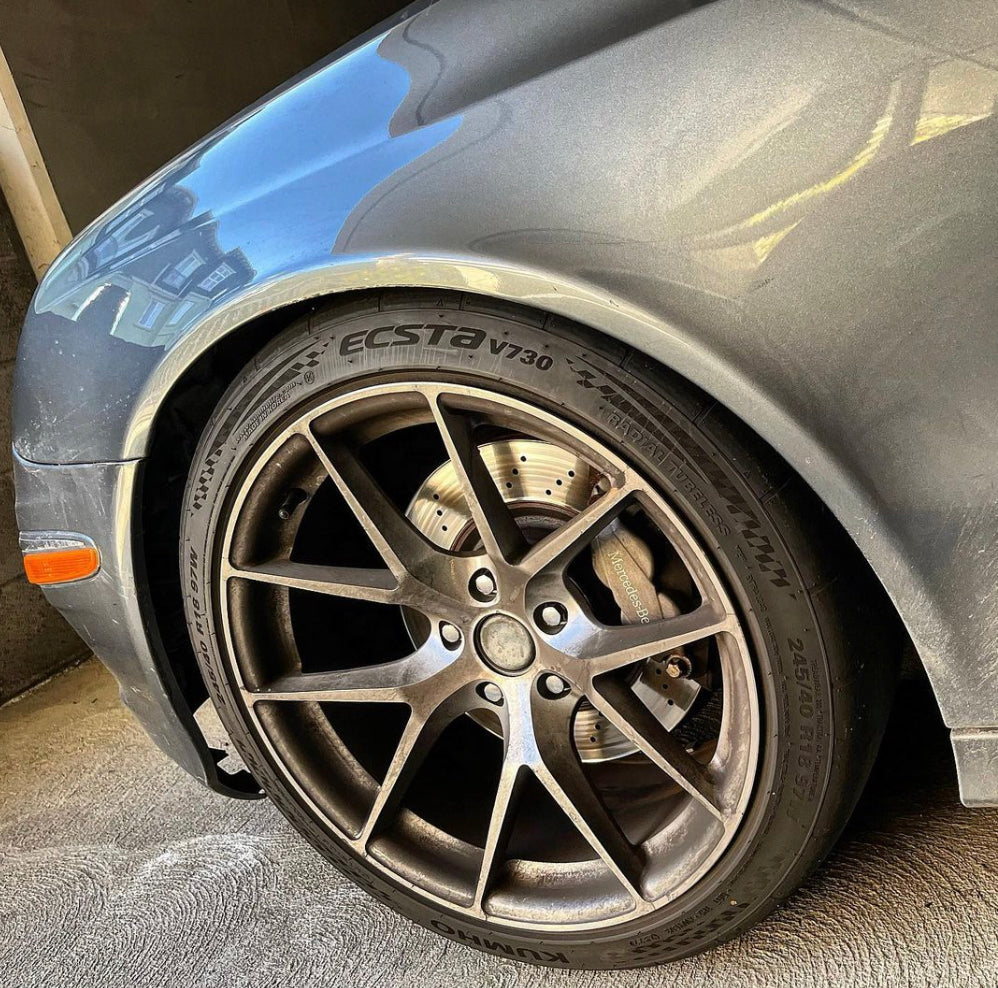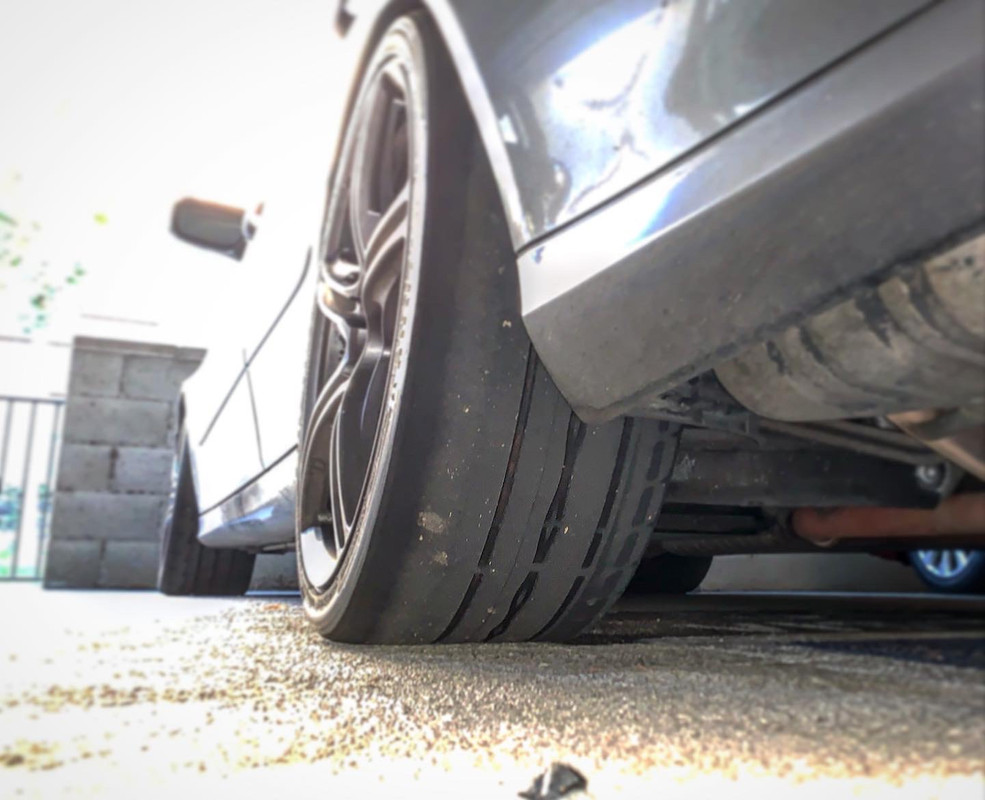
Tire Pressure, Tire Wear, and Alignment Optimization for Mercedes Performance
Tire Pressure, Tire Wear, and Alignment Optimization for Mercedes Performance
Maximizing your Mercedes' performance starts where it matters most — the contact patch between your tires and the road. Proper tire pressure, tire wear management, and a precision alignment setup are crucial whether you're carving backroads or prepping for track days.

Aggressive camber setup ready for both backroads and track days.
Why Tire Pressure Matters
Tire pressure is your first weapon for maximizing grip. It directly affects:
- Grip and traction
- Braking performance
- Tire longevity
- Overall handling balance
🔹 Overinflated tires = reduced grip, harsh ride, center tread wear.
🔹 Underinflated tires = sloppy handling, increased shoulder wear, overheating.
Most Mercedes platforms perform best around 34–36 PSI cold for daily driving. But remember — as your tires heat up under aggressive driving, pressure increases. A cold 36 PSI can easily become 42 PSI hot, which reduces grip. If you're driving hard, start closer to 30 PSI cold to hit the sweet spot of 36 PSI hot, where most performance tires operate best.
🔹 Overinflated tires = reduced grip, harsh ride, center tread wear.
🔹 Underinflated tires = sloppy handling, increased shoulder wear, overheating.
How to Read Tire Wear Like a Pro
Your tires tell the story of your setup — if you know how to listen. Even wear across the tread confirms that your alignment and tire pressure is dialed in properly. But you don’t have to wait until the tire is worn to read it. A temperature gun used immediately after a hard drive can show you which part of the tire is working hardest. Ideally, you want even temperatures across the inner, middle, and outer sections of the tread. If one part is hotter, that’s the part doing the most work — and a sign that your pressure or alignment might be off.

Even tire wear confirms precise alignment, tire pressure, and suspension tuning.
- Center wear: Overinflated — reduce PSI slightly.
- Edge wear: Underinflated or excessive body roll — increase PSI or stiffen suspension.
- Feathering/Cupping: Alignment issues or worn shocks — time for a precision alignment check.
- One-sided wear: Camber or toe problem — consider adjustable camber arms.
Perfecting Your Alignment Setup
Alignment settings are the hidden secret to unlocking true handling performance.

Dialing in a track-ready Mercedes alignment setup for sharper handling.
- Camber: Maximizes cornering grip by keeping the tire flat through turns.
- Toe: Fine-tunes turn-in response and straight-line stability.
- Caster: Stabilizes high-speed driving and adds steering weight.
🔹 Street setup: Mild negative camber (~-1.0°), slight toe-in.
🔹 Track setup: Aggressive negative camber (-2.0° to -3.0°), zero or slight toe-out for sharper turn-in.
Unlock Your Mercedes' Full Potential
Ready to optimize your tire setup, fine-tune your alignment, and transform the way your Mercedes handles?
Drive faster. Drive smarter. Drive like you mean it.